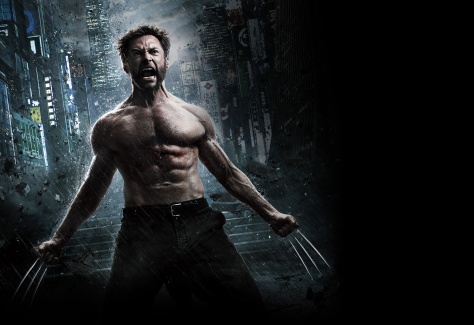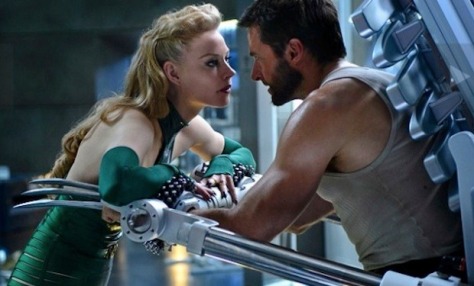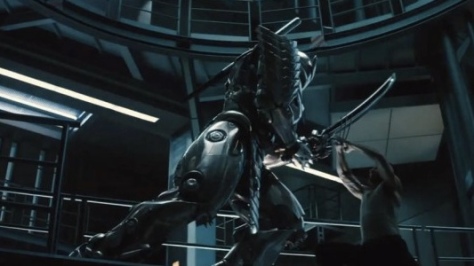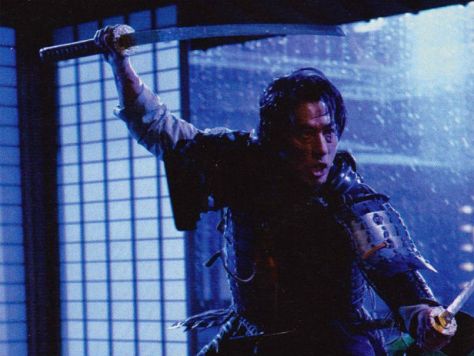Close to the top of nearly every comic book aficionado’s list of favorite characters you will find that surly Canadian mutant, Wolverine. Seriously, what’s not to love? He’s a hard edged loner with an indestructible metal skeleton, invulnerability via healing factor, two sets of foot long stiletto claws just a SNIKT away, and of course, that iconic hair style. The Wolverine honors the character, giving him a much better showing than the previous X-Men Origins movie. Though this film has its inevitable flaws, overall it encapsulates the character well, making expert use of source material.
There are a great deal of parallels that can be drawn between The Wolverine and Christopher Nolan’s Dark Knight trilogy. The referencing of source material is a very good place to begin the comparison and examine what The Wolverine is. Batman Begins was loosely based off of Frank Miller’s seminal Batman: Year One series. The Dark Knight was likewise set around similar events and themes taken from Jeph Loeb and Tim Sale’s Batman: The Long Halloween. While the actual villains and overall plots were completely original from the aforementioned works upon which they were based, there is a rough structure and use of reworked plot points throughout each. Such is the case with The Wolverine, whose villains and plot are all its own. The story, however, bears the structure and hallmarks of two previous works. The plot and some of the tertiary characters find their origins in a Chris Claremont written Frank Miller drawn limited series simply entitled Wolverine. The beginning of the film as well as a certain portion of the middle of the film in which Wolverine and Mariko hide out on the Japanese coast seem to pay homage to the Brian K Vaughn limited series entitled Wolverine: Logan taking place around Wolverine’s time in Japan during WWII. A lot of his animalism tempered by a Japanese woman’s affection rings true in these scenes as well as putting him in the path of the atomic blast from Nagasaki. Both volumes give skeletal structure to the movie and a place for filmmakers to jump off of, but the freedom of re-adapting both into a more contemporary context.
Another parallel that can be drawn between the Dark Knight Trilogy and The Wolverine comes through in the depiction of the comic book worlds each take place in. Overall, the super-powered aspect of this new X-Men movie is understated, with only three real mutants present throughout its two hour run time. To some this may be a detraction, but I look on it as a positive. One of the hallmark traits of Wolverine, as stated above, is that he is a loner and an outcast. Part of this is a conscious choice he makes, which this movie focuses heavily on, following the trauma of having to euthanize Jean Grey, the woman he loves, at her own behest. The greater part of his displacement is that he is a mutant. He’s a freak. He isn’t like other people. Making him almost the only mutant seen in this film encompasses that motif brilliantly, really accentuating his feelings of alienation. The other two mutants are a creepy serpentine henchwoman, with whom he really can’t relate, and a prophetess, whose power isn’t visible and whose purpose in the story as a mutant is to create ominous plot foreshadowing. With that said, Wolverine is a mutant who fights the mundane. Sound too easy? Add in the fact that Wolverine’s healing factor is removed for a large part of the movie, making him mortal for most of its run time, subject to blood loss, fatigue, and lasting, searing pain after his breakneck fights. Now things get interesting . . .
The premise of the film dwells on Wolverine’s exile after he kills Jean, basically living as an animal in the forest, away from a society he no longer feels fit to live in. During this exile, the oracular Japanese punk rock girl, Yukio, finds him in the midst of a bar room brawl and shows him a katana that belonged to a Japanese soldier named Ichiro Yashida, who he met during the atomic bombing of Nagasaki. He saved Yashida’s life and as an old man who has grown rich and founded one of the largest corporations in Asia, Yashida wishes to say one last thank you and his final goodbye to the enemy soldier who selflessly shielded him from nuclear fire. Wolverine begrudgingly goes and gets caught up in family drama and political intrigue that threatens to tear apart Yashida’s legacy and the lives of his family.
Overall I really liked the film. It wasn’t the most spectacular superhero movie ever filmed, but it had many virtues that elevated it far above the first film, X-Men Origins. It goes without saying that Hugh Jackman nails the role of Wolverine, making it worth the ticket price with that fact alone. However, I don’t believe in going out on a negative note, so I will talk about its sins first, so I can end on the aspects that made it work so well. Firstly, I feel that one of the greatest Japanese actors of our day, Hiroyuki Sanada, was underutilized in the role of Lord Shingen. Though there is promise in his character’s backstory and in his positioning within an intricate web of political intrigue, the pay off is relatively minor. He makes all his screen time count, however, working every last gesture and line of dialogue into clever characterization. Also underwhelming is the use of the character: Viper. Viper is an alternate nom de guerre for the international terrorist, Madame Hydra. A regular woman in the comics, this movie casts her as one of the three mutants, here having bizarre poisoning abilities and serpent-like characteristics. Making her a mutant wouldn’t have been so bad if they had done it in an interesting way. Also she is played by a Russian actress, Svetlana Khodchenkova, but does an American accent. Madame Hydra was born in the Soviet block, heavily insinuated to be Hungary, so having a Russian woman play her as Eastern European would have been perfect. This was a missed opportunity in my opinion. Finally, the usage of the Silver Samurai in this film was interesting. This part wasn’t bad, per se, but it also was something of a departure from how he is depicted in the comics as a mutant with the power to supercharge his katana to white hot blades, capable of cutting through most objects. The film re-imagines the Samurai as a mechanized suit of armor made from adamantium (the same indestructible metal that cases Wolverine’s own bones and claws) and with two massive Japanese blades that are super-heated through the suit’s power source to achieve what once was done via mutation. Also the identity of the Samurai becomes something of a misnomer, as the character in this film who bears the name of the Silver Samurai from the comics does not inhabit the armor, nor his mutation.
On the other hand, the novel nature of Silver Samurai’s usage does provide a healthy switch up that keeps the comic book nerd on his or her toes when watching. Faithful adaptations can change small details, but when they stick to the canon with absolute totality it can add monotony to the proceedings. So while there is always the possibility he could have been done better, the Silver Samurai was still interesting to behold. The rest of the movie created and perpetuated an ambiance the encouraged a footing in reality (again a la Dark Knight Trilogy), but also spun a novel, nuanced comic book feel that kept the viewer invested. Perhaps the most apparent example is the scene in the mountain village at the end of the film. Despite the rest of the film seeming to take place in either spring or summer, this scene in the mountains at the foot of a peak housing a fortress-like research/development lab looks to be filmed in the dead of December or January, with houses covered in a foot of gleaming white snow in the dead of night. The town is abandoned and the architecture is premodern, eliciting both traditional Japanese feudalism and classic ukiyo-e artwork, namely Hiroshige’s “Night Snow at Kambara.” And really, what snowy Japanese village at foot of a villain’s secret lair wouldn’t be complete without a phalanx of ninjas hiding in the shadows.
Another part of the story that draws the viewer into the plot is the mode of Logan’s self-recrimination. After killing Jean, Logan has exiled himself from society and while living as a beast in the forest his dreams always take him back to Jean, laying next to her in bed, who in death professes her desire for him that she never did in life, blames him in a round about way for her death, and guilts him with the cold loneliness of death, beseeching him to join her. The real Jean would never do this, of course, especially considering she was the one who tearfully begged him to kill her, and she would never wish him dead for it. “She” is a siren of his own making luring him into self-destruction, allowing for the beautiful bookend sequence taken, as stated above, from Wolverine: Logan. In the scene he wakes up from being in bed with Jean who lures him away from humanity and life itself to waking up next to Mariko who shows him he is more than just a beast and that life is for living not regretting the past.
The Wolverine tells a very action packed, philosophical super-hero story that can appeal to most audiences, regardless of their familiarity with comics. Unlike X-Men 3 and X-Men Origins: Wolverine, this movie is amazing and works as both as a stand-alone film and a piece of a much larger whole. This movie helps usher in a new era in the X-Men franchise with X-Men: First Class. Definitely worth watching.

